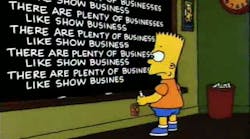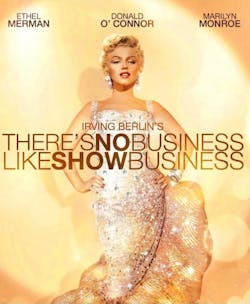Through the years, I've been fortunate enough to sometimes write and edit article dealing with the entertainment industry. These usually involved thrill rides at amusement parks but also included special effects used in movies and in live theater. Developing these articles generally turns up much more information than space allows to print or that deviates from the magazine's focus of system design.
One article I remember in particular involved an interview with Dan Hofman, of Showtech, Inc., I learned how he sometimes has to overcome directors' fears or negative perceptions of hydraulics. Dan said this problem usually is overcome once a director discovers that hydraulics was instrumental in the success of other impressive effects. For example, in a production of Peter and the Wolf, Showtech was called on to supply a mechanism that would whisk an actor leapt ten feet off the ground to the top of a tree in about a second with rigging not visible to the audience.
Dan housed a hydraulic power unit and cylinder inside the tree trunk and connected a block-and-tackle assembly to the cylinder rod to gain mechanical advantage. The block-and-tackle arrangement multiplied the stroke of the cylinder but divided its force by an equal factor. This meant hydraulics was the only choice for generating the high force and rapid linear motion needed. A cable on the output end of the block-and-tackle assembly ran inside a low hanging tree branch containing a track. Hooking the end of this cable to a harness on the actor and activating the hydromechanical system gave the impression that the actor leaped ten feet from a standing position without any visible cables.
Another problem is how financially risky show business can be for those who are not involved directly. Dan said that in legitimate theater, a contractor like Showtech often can win or lose a bid based on a prep charge. A prep charge is the fixed cost a contractor charges a production company to complete the project at hand. The rest of the money comes from the lease agreement between the contractor and production company. What makes the financial picture so risky is that the contractor has to predict how well a show will do when figuring fixed and contract charges. If he thinks a show will do well -- and, therefore, run for a long time — he can recover his investment just on the lease agreement and not even quote a prep charge. However, if he thinks a show may close after only a brief run, he will tend to quote a high prep charge because a short lease term will not cover his investment.
What complicates matters even more is competition. If a competitor thinks a show will do well but you don't, you'll likely lose the contract because of your higher prep charge. So trying to win a contract tends to keep your prep charge low, whereas minimizing risk tends to keep it high. But I guess that's show business.


